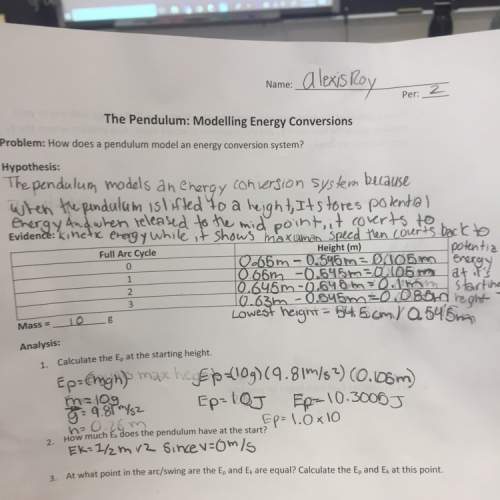
Physics, 05.05.2020 06:28 daartist3121
O understand the definition and the meaning of moment of inertia; to be able to calculate the moments of inertia for a group of particles; to relate moment of inertia to kinetic energy. By now, you may be familiar with a set of equations describing rotational kinematics. One thing that you may have noticed was the similarity between translational and rotational formulas. Such similarity also exists in dynamics and in the work-energy domain. For a particle of mass m moving at a constant speed v, the kinetic energy is given by the formula K=12mv2. If we consider instead a rigid object of mass m rotating at a constant angular speed ω, the kinetic energy of such an object cannot be found by using the formula K=12mv2 directly, since different parts of the object have different linear speeds. However, they all have the same angular speed. It would be desirable to obtain a formula for kinetic energy of rotational motion that is similar to the one for translational motion; such a formula would include the term ω2 instead of v2. Such a formula can, indeed, be written: For rotational motion of a system of small particles or for a rigid object with continuous mass distribution, the kinetic energy can be written as K=12Iω2. Here, I is called the mom

Answers: 2
Another question on Physics

Physics, 21.06.2019 21:20
An artificial satellite circles the earth in a circular orbit at a location where the acceleration due to gravity is 6.03 m/s^2. determine the orbital period of the satellite.
Answers: 3

Physics, 22.06.2019 04:10
Atotal charge of –6.50 µc is uniformly distributed within a sphere that has a radius of 0.150 m. what is the magnitude and direction of the electric field at 0.300 m from the surface of the sphere? a) 2.89 × 105 n/c, radially inward b) 6.49 × 105 n/c, radially outward c) 4.69 × 105 n/c, radially inward d) 9.38 × 105 n/c, radially outward e) 1.30 × 106 n/c, radially inward
Answers: 3

Physics, 22.06.2019 11:30
With the simplified model of the eye, what corrective lens (specified by focal length as measured in air) would be needed to enable a person underwater to focus an infinitely distant object? (be careful-the focal length of a lens underwater is not the same as in air! assume that the corrective lens has a refractive index of 1.62 and that the lens is used in eyeglasses, not goggles, so there is water on both sides of the lens. assume that the eyeglasses are 1.90
Answers: 1

Physics, 23.06.2019 04:31
Ivana walks 2km north then turns around and walks 3km south
Answers: 1
You know the right answer?
O understand the definition and the meaning of moment of inertia; to be able to calculate the moment...
Questions



Computers and Technology, 26.06.2019 21:30

Mathematics, 26.06.2019 21:30


Mathematics, 26.06.2019 21:30




Mathematics, 26.06.2019 21:30

Chemistry, 26.06.2019 21:30








English, 26.06.2019 21:30




